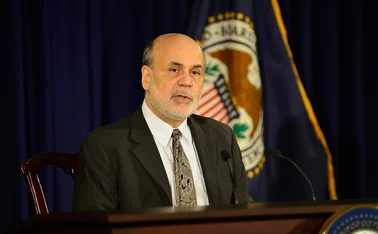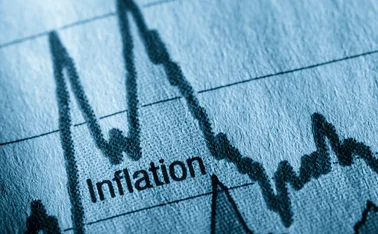
James Bullard on 2% rates, tariffs and Fed leadership
St Louis Fed chief on fintech disruption, Fed balance sheet and agent-based modelling
There have been some big changes in personnel at the US Federal Reserve board, as well as some of the regional feds, during the past year. From your perspective, what is different in terms of priorities and actions under the new leadership of chair Jerome ‘Jay’ Powell and vice-chair Randal Quarles?
Jay Powell is a great choice for Federal Reserve chair. He has Fed experience and great markets experience. I think he will provide great leadership for the Federal Reserve. Governor Quarles is vice-chair for supervision, a role that has not been filled until now, and recently was reconfirmed by the US Senate. I think he will provide a lot of great leadership on the regulation side. It is a problem that we have only three governors instead of our full complement of governors. They need more people just to be able to cover the normal activities of the board, and I’m hopeful that the Senate will confirm the pending appointees soon and that we’ll be able to have more ordinary functioning of the board of governors.
Of the [regional Fed bank] presidents, a few have turned over. Probably the most significant change is John Williams to the New York Fed. I’ve known John for 20 or 25 years. I think he’ll be a great leader for the New York Fed and provide great leadership for the Federal Reserve System. So I think we’re in pretty good shape, if we could get some of the remaining governor slots filled.
Has there been any major change in policy direction or in terms of strategic focus that you’ve got a sense for under the new leadership?
Well it’s very clear on the regulatory side that we’ll try to get more efficient. Probably swing the pendulum back a little bit in the direction of less regulation. But I wouldn’t say a wholesale change – I would say relatively minor changes. Congress passed a new bill that made some changes to Dodd-Frank, but they were relatively modest. What that showed to me is that the basic framework of Dodd-Frank will remain in place and it is going to remain in place for the foreseeable future. But some of the things around the edges were changed somewhat, and the Fed will have to adapt to that new law.
Another major issue are the tax cuts and increases in public spending that have been approved by Congress that have the potential to significantly alter the inflation outlook, which may force the Fed to speed up the tightening cycle. How serious a risk is there that the Fed may have to raise rates more sharply than was expected?
Well if you look at the market expectation of inflation based on the Tips [Treasury inflation-protected securities] market – that’s a CPI-based expectation, but if you adjust that for PCE-based inflation – it’s actually suggesting that markets think inflation’s going to be slightly below 2% over the next two years, five years and the five years after that. What I like about looking at that measure is that the markets have already taken into account the fiscal package and other developments like potential for a trade war. I think the markets are not seeing that much inflation out there in the future, and I take that to mean that we’ve got our policy about right or possibly that we could be a little bit more cautious about raising rates than the median SEP [Summary of Economic Projections] would suggest.
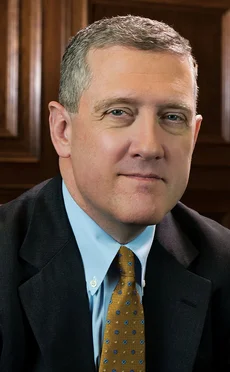
What would happen if some of the trade tariff threats are seen through – so, extending tariffs to $200 billion of Chinese goods at a level of 25%, versus the 10% at the moment? Do you think the markets have factored in all of that yet?
When you look at trade issues, if you go product by product and look at various tariffs, it’s hard to get those kinds of things to add up to a lot in a macroeconomic model because those are just one-off products in a sea of hundreds of millions of products. But if there was a generalised build-up of tariffs and non-tariff barriers around the world, then global trade would collapse and then it would, I think, have quite a large effect. So I think there can be large effects, but I don’t think we’re close to that right now, and it’s not clear what the ultimate outcome will be. So markets are, I would say, still pricing in the idea that this will not develop into a full-fledged trade war.
Is that how the Fed policymakers will view it?
I don’t know how the others view it, but that’s how I would see it right now. Obviously, it’s a very fluid situation, and we’d want to keep an eye on it going forward.
Is it possible that these fiscal and tariff measures could strike the right balance to prolong recovery while there’s a trade restructuring that, at the same time, allows the Fed to reduce its balance sheet and raise rates to more normal levels? Is that a likely scenario?
Well, one thing is that I think we’re actually at normal levels now, given the global rate environment, so we’ve already taken a lot of pre-emptive action ahead of inflation coming up to target. So while inflation was still low, we started normalising. We put in a plan to start to shrink the size of the balance sheet, and we’ve taken all that action before inflation even came up to target. It’s only coming up to target right now. I think because we’ve taken all that pre-emptive action, that’s why markets aren’t expecting very much inflation going forward. It is true that there are risks out there from trade and that a lot of the effects of the fiscal package will probably be temporary, and we probably will be growing slower next year than we are this year, so I think that’s also part of the vision for the next two years going forward.
Let us suppose the trade war does not develop, so just looking at the fiscal package. In my mind, that was mostly a corporate tax reform that was long overdue for the US because lots of other countries have lowered their marginal corporate tax rates over the last 15 to 20 years. The US hadn’t done anything about it. So for us to get our rate down into the middle of the OECD [Organisation for Economic Co-operation and Development] range was probably a good idea. Firms will see a one-time benefit from that, but then after that, they’ll have to compete. I think that’s basically what’s happening in the first half or maybe all of 2018, where you’re seeing corporate profits generated by reductions in the corporate tax rate, but that will only last so long until they adjust to the new system.
While inflation was still low, we started normalising. We put in a plan to start to shrink the size of the balance sheet, and we’ve taken all that action before inflation even came up to target. It’s only coming up to target right now. I think because we’ve taken all that pre-emptive action, that’s why markets aren’t expecting very much inflation going forward
Back to the trade side, I think one of the biggest risks on trade is the disruption of the global supply chain. People have talked about this. But you could imagine that you have one set of tariffs in place, whatever they are, and then firms adapt to that, and they have their sourcing in various countries, and their factories are built in various countries, and this is how they build goods and services. And now you scramble that all around and you change all the tariffs to something new. Now they are going to adapt the global supply chain to this new environment, and then they’re going to have to pay all these transition costs to get from one environment to the other. The new environment might be better, might be worse – it’s hard to tell, but the transition costs are something that you’d have to pay, so there could be temporary effects from that.
If import costs went up, how would the Fed policymakers look at that? Would that be something that would be viewed as a one-off shift that would be looked through?
I would be inclined to view that as a one-time shift in the price level and something we would look through. But you would have to ask my colleagues how they wanted to take that. If you look at something like the big oil price decline in 2014, we treated that as a temporary event. Then again, in 2017, when we saw cell phone prices decline precipitously in the spring in the US, we looked at that as a one-off event and looked through that. I think the same thing could be said for any trade effects that would come through – we would probably view that as a one-time change. One thing about this is the trade thing is evolving over time, so it is not just a one-time shock.
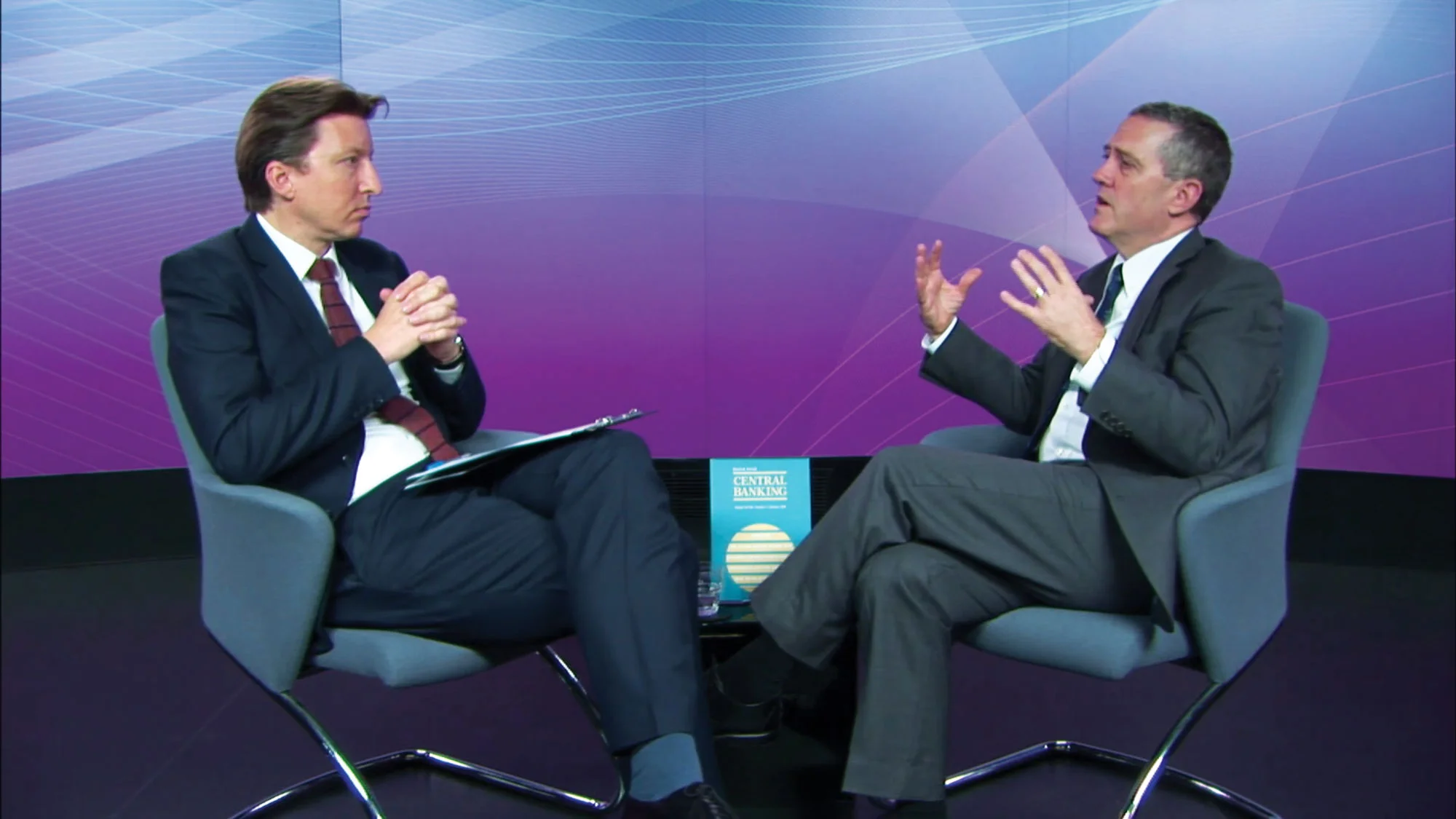
In the past, you’ve stated that inflation has remained centred below the Federal Open Market Committee’s (FOMC) 2% target. Do you still believe there’s a need to temper the pace of normalisation?
I think a 2% policy rate would be very close to normal or normal, given this environment of very low rates globally, very low real interest rates at the short end globally and very low inflation by historical standards globally. I think in this environment, 2% on the policy rate is normalisation, and possibly you could go slightly above that, but I would prefer to get inflation expectations recentred on the 2% target because we have missed inflation to the low side since 2012, and we’re just now coming back to target. It would be better from the perspective of medium- to longer-term monetary policy to have the inflation expectations centred right at 2% and not at something slightly below 2%. If you just look at the inflation numbers like PCE core inflation over the last six years, you might come to the conclusion that the committee has a target of 1.5% or 1.6%, or something like that. So it’s not unreasonable for markets to be adjusting their longer-run expectations downwards. But as a policymaker, you do not want to allow that to occur. So probably the best thing we could do is be cautious in raising the policy rate and allow those expectations to re-centre on 2%.
In terms of unemployment, you’ve stated in the past that low unemployment readings did not appear to be an indicator of substantially higher inflation to come. Do you maintain that position today?
I still think that that’s right. The Phillips curve is extremely flat in today’s environment. Most people seem to agree on this. There’s a good reason behind that, which is that during the inflation-targeting era, which dates from the 1990s, central banks have been much better at targeting inflation and reacting to actual inflation developments and expectations of inflation. This has kept inflation low and stable, and therefore when you try to regress inflation on some real variable, there’s hardly any variability in inflation compared to what there used to be, and so it looks like there’s no relationship between inflation and the real economy, but this is partly because policy is reacting in such a way to be pre-emptive in stopping the real economy from feeding back to inflation variation. So it’s maybe a subtle issue, but I think it’s one that’s important in how we perceive events in the real economy and how we perceive those as fitting in with inflation developments.
I think a judgement has to be made on whether the Fed wants to facilitate banks meeting those regulatory requirements through the reserves policy, or whether we want and expect banks to meet those requirements on their own, separately from what the central bank is doing
Just to give some idea of the magnitudes here, the ratio is about 10:1, so the natural rate of unemployment, if you thought that was 4.5% and unemployment went all the way down to 3.5%, so that’s 100 basis points below the natural rate, that would still only account for 10bp of inflation, so that’s not much. Even if unemployment went all the way down to 2.5%, which would be historically low in the US, you’d only get one more tenth of a percentage point of inflation based on these empirical estimates. So it’s extremely flat in today’s environment. So I don’t think we should expect a lot out of this channel. Things can always change and surprise us, and we’d certainly keep an eye on it, but just citing the fact that the economy’s growing fast or that unemployment’s low is probably not a reason to think that by itself, that’s going to mean higher inflation.
How much of an impact are you seeing from the balance sheet wind-down that’s been going on? Do you expect any change in this once you hit the expected peak in October this year?
We started this process in the fall of 2017. I thought that chair [Janet] Yellen did a great job of getting the committee organised and a proposal on the table that everybody could support. That’s been evolving since then and, as you say, it’ll reach its peak later this year. But the reaction has been very muted in financial markets, and I think it’s all been priced in. So I’m really not expecting any surprise on that dimension. The balance sheet has been shrinking somewhat more because the economy is also growing, and so it’s actually shrinking a little bit faster than people appreciate as a ratio to GDP. Nevertheless, it’s all slow and gradual, and well-understood in financial markets.
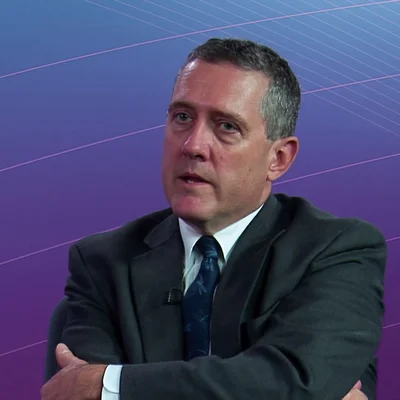
What do you view as the suitable size for the balance sheet in the long run?
I think I have lower numbers in mind than what most people have. If you look at where we would be if the balance sheet had just grown at the same rate as nominal GDP or something like that, that’s the kind of thing I would use as a baseline, and then maybe add some to that size based on the idea that we’re going to operate with more reserves than we used to. But even with that, you only get numbers in the $2 trillion to $2.5 trillion range, and I don’t think you really need to be higher than that. One issue about this is like: “When are you talking about?” Like, is it 2020, or is it 2025 or 2030? So you’d expect this to grow over time at the rate of nominal GDP growth. I guess I would see a somewhat smaller balance sheet than what people are typically talking about today.
Also, another question on this, which I think is an evolving question that is coming up, is that the reserves are proving useful, especially to the very largest banks that see them as a way to meet some of the regulatory requirements that came out of Dodd-Frank, including liquidity ratios and other facets of the regulatory environment. So for that reason, maybe you would want more, maybe you would want less. I think a judgement has to be made on that issue whether the Fed wants to facilitate banks meeting those regulatory requirements through the reserves policy, or whether we want and expect banks to meet those requirements on their own, separately from what the central bank is doing.
What would you favour?
Well, I’ve long thought the banks should probably do this on their own, and that was the spirit of the legislation. But it is possible that there’s a financial stability argument lurking there that would suggest that this is a better way to operate, with higher reserves for this reason. I don’t think this has really been fleshed out as a debate, but I can see it emerging as one.
When you talked about that timeline, 2020, 2025, what did you have in mind for the balance sheet to be in the $2 trillion to $2.5 trillion range?
In my mind, if it was today and we had evolved from where we were pre-crisis, plus we added, let’s say, $500 billion in reserves because we’re going to operate with a higher level of reserves, we’d be in the low $2 trillions. From there, that would grow at the rate of nominal GDP growth.
How do you see the impact of tighter US monetary policy in terms of its effects on emerging markets? Is it contributing to the problems in countries such as Argentina, Turkey and South Africa? Does the Fed care if its policies destabilise other economies?
This has been a topic for several years, maybe even longer than that. But I would see these countries as having domestic political issues of various kinds, elections coming up or having just occurred, or changes in country policy on their monetary arrangements. So I see them as being relatively idiosyncratic. Also, I think Fed policy has been highly telegraphed in the last few years and has been well-understood in global financial markets. So there really have not been any surprises in the last couple of years, since the ‘taper tantrum’, I would say, that you could point to as roiling global financial markets. It has all been quite stably done.
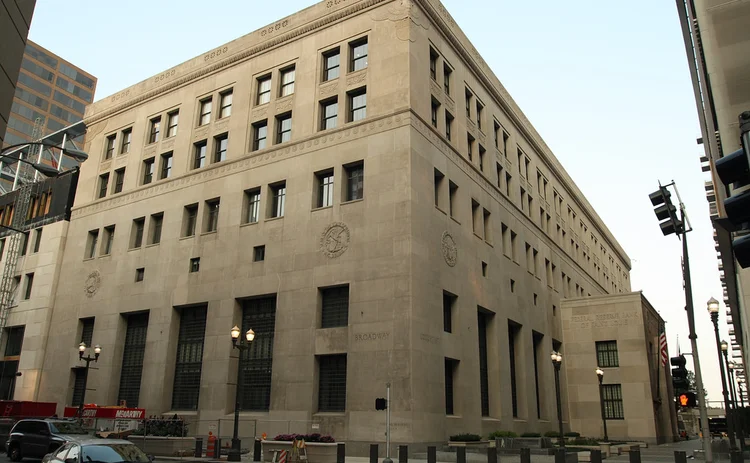
Some sovereign investors are concerned about the US yield curve inverting. How likely do you think that is as an event? And, should it invert, do you believe it would herald a recession?
I gave a speech on yield curve inversion in December 2017, and part of the idea was to get a debate going on this issue before we got to the point of inversion – because once you get there, it might be too late. So I’ve been pleased that people have talked about it, and obviously there’s a wide variety of views, which can be broadly categorised into: the yield curve sends a good signal and therefore we don’t want to test the yield curve; versus the ‘this time is different’ camp, where they argue that something’s different about the yield curve this time. It’s been a good debate. I do think that we should respect the signal coming from the yield curve. It has been a good indicator of slowdown or recession in the US. I do not think there’s any urgency for the Fed to invert the yield curve unnecessarily. We don’t have an inflation problem that we have to fight in this circumstance. Therefore, I think we can afford to be patient with monetary policy and react to economic developments, especially on the inflation front, as opposed to trying to push ahead excessively with normalisation to the point where it might invert the yield curve.
Are you getting more support among some of your peers and colleagues on that?
You can check by asking them, they have public comments. But there have been a variety of views expressed on this issue.
There is now going to be a press conference after each of the FOMC meetings – something you have called for in the past. Do you think that’s going to make it easier to make policy decisions at the right time?
This is an important development, and I appreciate chair Powell being willing to go to a press conference after every meeting. I do think it will facilitate more timely decision-making. It will keep the Fed in sync with financial markets, I think, at various junctures. I think that during the era where we only had four press conferences, we were sometimes in situations where we weren’t communicating effectively and markets were developing rapidly. The first quarter of 2016 is an example of that, where the committee had said that we were going to push ahead with four rate hikes in 2016, and markets reacted badly in the first quarter of 2016. And, even though we had a meeting during that period, we didn’t really have effective communication until the March meeting, and then things corrected at that point. I think that was an example of where we were somewhat out of sync with what was happening globally. This will keep Jay with an opportunity to express the sentiment of the committee. Markets like the idea of having reassurance from the chair. Even if nothing is happening, they want reassurance from the chair that nothing is happening. And they want to be able to ask questions about various developments that have occurred and various data points that have evolved since the last meeting. So I think this will be an important development. It will have a somewhat different feel than it does now because now four of the meetings are off the table, more or less, and that will change in 2019.
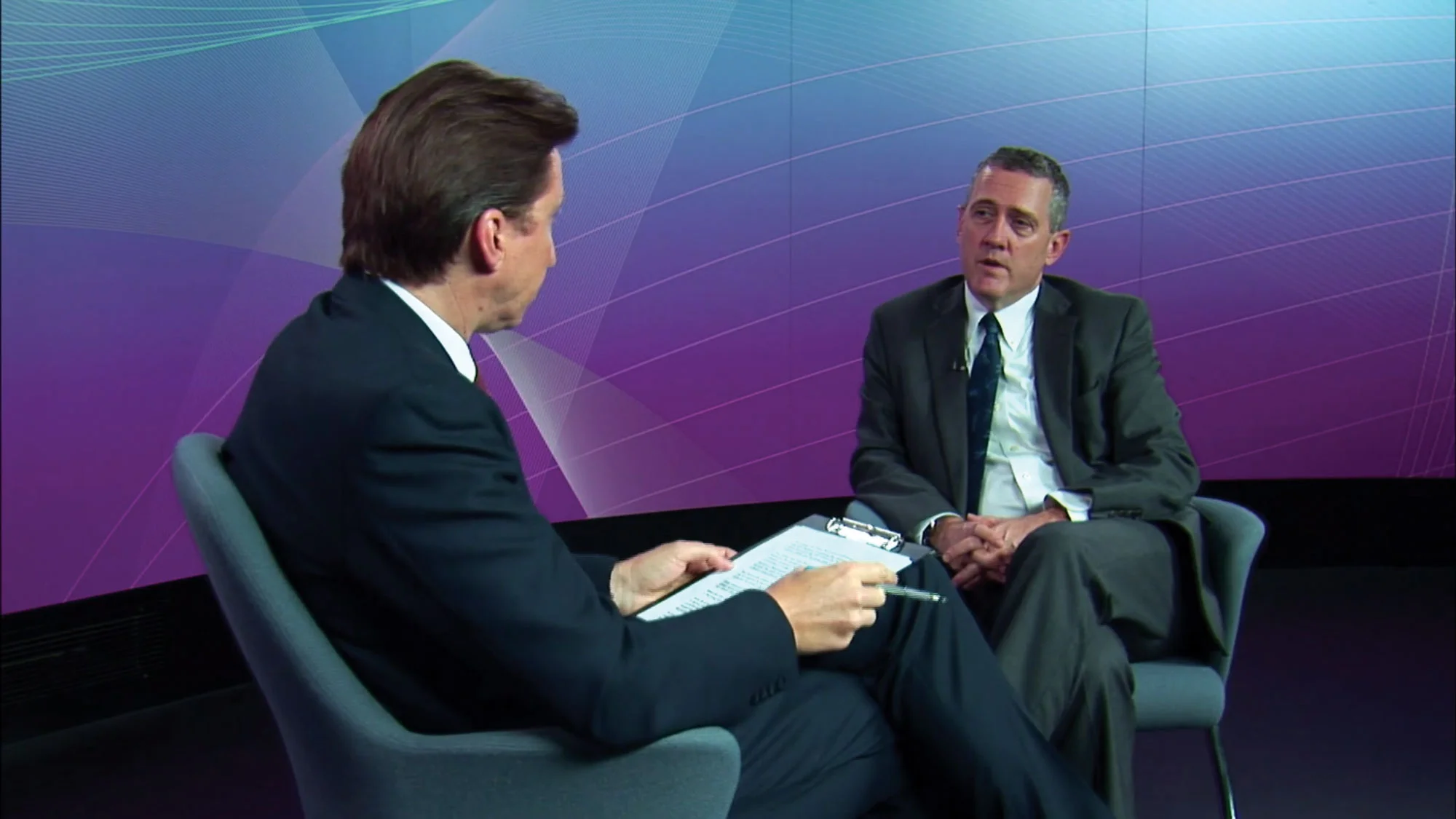
Has any progress been made to incorporate asset bubbles and financial cycle into economic models? Do you have any views about the future use of agent-based models, which have yet to live up to their full potential?
There has been a lot of work done on financial bubbles and how to model a financial crisis and get a crash. That is not an easy thing to do in the world of economic theory. There are many models out there. There are interesting developments and interesting ideas along those dimensions. But I don’t think any of them have really carried the day. The jury is still out as to which model could be used to become a standard.
Agent-based modelling is something I’ve actually worked on a lot in my own work. I’m very familiar with it. I was working on it at a time when it was unpopular. Now it’s a lot more popular. But this probably is the wave of the future because if you look at artificial intelligence and machine learning, these are the kinds of things that are incorporated in these models. Certainly in my own research, the vision was that we would be able to eventually simulate pretty complicated models and get them to match up with the data and understand the economy that way. It’s harder to do than you would think, based on the sentence that I just uttered. You would think it would be kind of easy, but it is not. You have to know quite a bit about what it is you are trying to model before you can really do this effectively. But nevertheless, it is eventually going to be the standard in macroeconomics, we’re just not quite there yet. In this world, things move very slowly, so it would be five, 10, 15 years.
Is there anything you can point to that has been a breakthrough in the agent model area?
It is becoming a standard in macroeconomics to have a heterogeneous agent model. These are fairly big, they are hard to solve at this point, and so they are cumbersome to work with, and you have to calibrate them in certain ways. Then, when you get your results, you are not sure if you got them because of the way you calibrated the model or whether you have really identified fundamental things that are going on in the model. So there’s a lot of work being done. That is becoming a standard, but it is not really simulated the way a physicist would do it or a computer scientist would do it. There is a lot of potential in the future to get to systems that you could simulate much more quickly and effectively and reliably than what we have today.
There are a lot of issues about getting the data to line up in the right way, making sure you are protecting the privacy of the data, this kind of thing. And you need to be able to ask questions – and you have to be able to do that in a timely manner as well. There is a lot that can be done, and we probably can get a lot more efficient
What do you make of efforts to make regulation more efficient? What are we likely to see from the US and from the Fed on this in the months ahead?
We could do a lot of things, probably, to become more efficient – better incorporation of technology into the regulatory process, so-called regtech. We are trying to think about how we can do that at the St Louis Fed. I don’t think we have anything really tangible. One thing we have done, though, is – this isn’t really tech – but a lot of regulation involves actually sending your regulators to the bank, and then they hang out in the bank and do the examination. We can do a lot of that remotely now, provided the bank is willing and able to provide their data, and then we just have maybe just a few days in the bank. So we’ve done a lot on that, which reduces a lot of travel cost and reduces a lot of the intrusiveness of the regulatory process on the bank. So you can imagine in an information age, in principle, you should be able to do it all off your desktop. We probably will get to that at some point. But it is harder to do than you think. There are a lot of issues about getting the data to line up in the right way, making sure you are protecting the privacy of the data, this kind of thing. And you need to be able to ask questions – and you have to be able to do that in a timely manner as well. There is a lot that can be done, and we probably can get a lot more efficient.
Are there likely to be any other major rule changes, apart from the ones related to Dodd-Frank that you spoke about earlier?
I do not see Congress changing anything. They have had their moment and their opportunity here, and I would not expect a lot more to come out of that part of the deregulation. As I was saying earlier, I think the message is that the structure of Dodd-Frank is here to stay. The details might change, but the structure is here to stay.
Can you significantly reduce the burden on the financial sector in a way that doesn’t impair financial stability?
I will give you Jim’s view: the issue with financial stability going forward is clearly, what is going to happen outside the banking sector? The general principle of Dodd-Frank is to put heavy regulation on things that we call banks. But all the action is coming out of Silicon Valley and on things that we call non-banks. It’s that shadow world where the next crisis will be brewing, and how is the regulatory apparatus going to handle that going forward? I think that’s probably the biggest issue. Of course, it’s hard for all of us to get our heads around what’s really happening. We really have to stay up on that and think about that. But, to me, that’s the biggest issue. I think the regulatory matters around banks themselves have probably been settled and debated enough at this point.
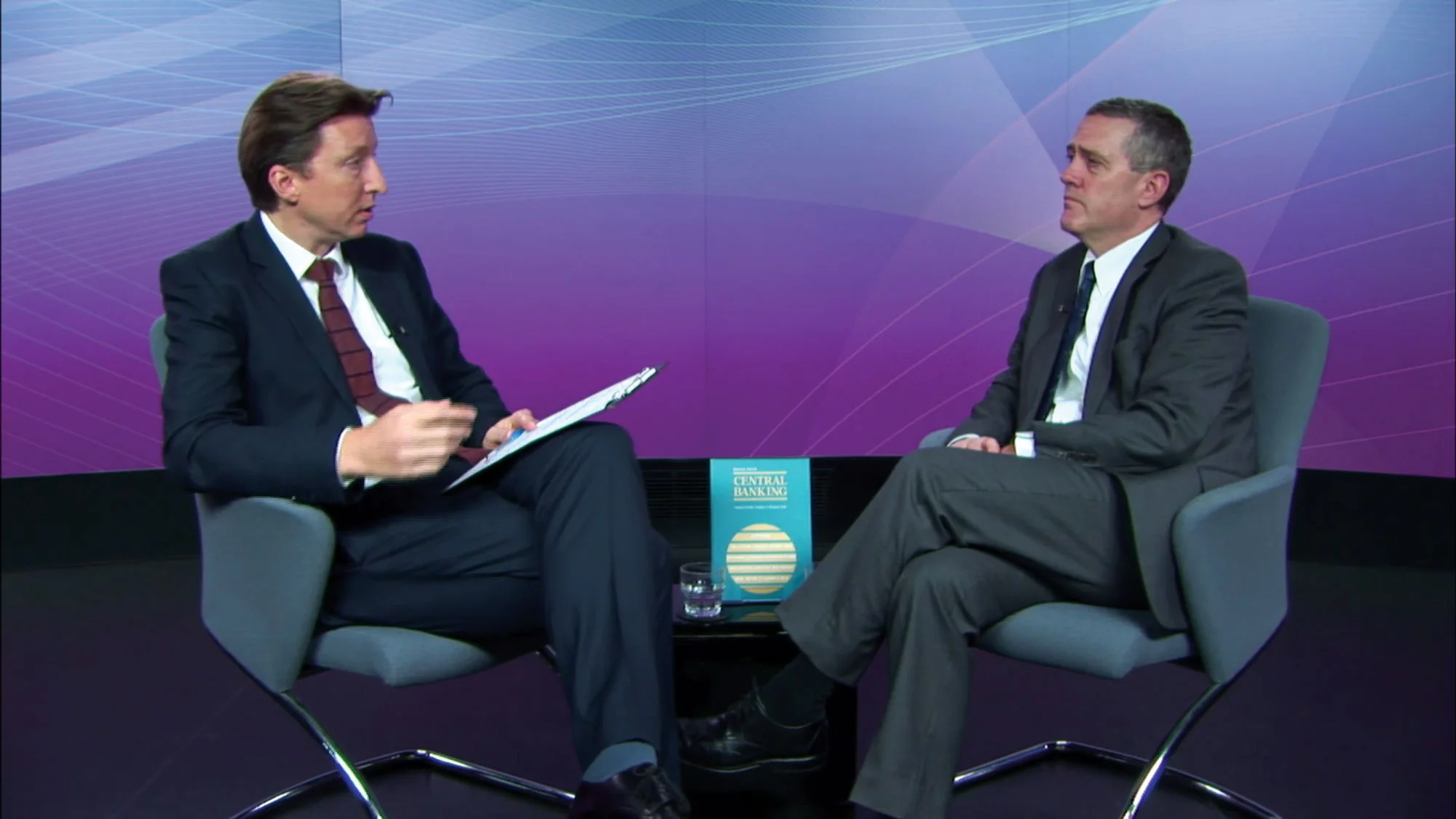
How involved can the Fed itself be, given its remit, in trying to secure those financial stability aspects? Some people would say: “Well, it should be based on the type of activity” – so the regulation should be the same whether it’s a traditional way of doing it or whether it’s a high-tech version. If the activity looks the same, you regulate it the same. Can the Fed get involved in some of those areas?
Not by law. By law, everything goes off the bank charter. It’s the bank charter that determines what our regulatory role is going to be, and bank holding companies, which also comes off a legal interpretation. But it’s bigger than that, because the whole game in Silicon Valley is to do regulatory arbitrage: “Let’s provide financial services in ways that are not covered by ordinary laws, and let’s build up a business, like Uber, let’s build up a business and a constituency for that business outside of the normal legal framework, and then we will wait for the legal system to catch up, and then we’ll litigate at that point.” All of that I think is okay. That is probably the normal course of innovation in any industry. But you would hate to see that lead to some kind of financial crisis. So the challenge is: how to understand this, number one; and then how to cope with it, number two, in the years ahead.
Would the Fed’s involvement be via the Financial Stability Oversight Council (FSOC)?
I think it should be FSOC. But FSOC is a collection of regulatory agency heads and the US Treasury secretary, and I have always felt like maybe that wasn’t the right forum, necessarily. It creates a kind of inside Washington, highly politicised kind of environment under which to consider these issues. And I think they are probably best thought about maybe outside the Beltway or in some other forum where you don’t have heads of agencies worried about protecting their agency, and the Treasury secretary worried about how it’s going to play politically, because I think these are bigger and deeper issues than just sort of parochial analysis would be able to deal with.
Do you have a suggestion for an outside-the-Beltway structure?
Well, this conversation does occur in financial markets all the time, and so people are thinking about it. Here is what people will say about disruption in financial markets. The banks will tell us – I’ve talked to them – the large banks especially, they will say: “Don’t worry. We’re all over this. We’ve got our own people. We’re going to wait for Silicon Valley to innovate, and then we’re going to buy it, or we’re going to innovate ourselves.” But that’s not how this occurs, I don’t think. When you see fundamental disruption, it’s because there is some new business model, and the incumbent can’t deal with the new business model. That’s the kind of disruption that you’d be watching for. I’m not quite sure how that’s going to occur. But I will give you one example. Alibaba is in banking services, even though they were not a bank. Chinese citizens decided they would just rather get their financial services from Alibaba. To what extent could other citizens in other parts of the world just get their services from Alibaba? So it is a global thing as well. I think disruption occurs in ways that are always invisible to the incumbents that are inside of a heavily regulated industry.
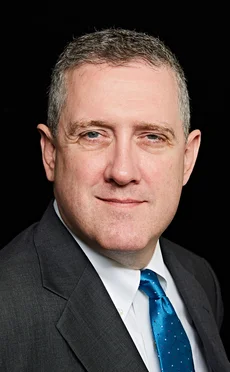
Are liquidity constraints on smaller banks – the community banks, in particular – at a level where they should be now?
I haven’t heard smaller banks that I can recall talking a lot about this issue. Maybe once in a while, but they’re more concerned about [lending standards]. They’ll say there are some good loans to make, but the competition is so heavy to make these few loans that they are worried that the terms are too lenient. I do worry about that, because that sounds like overextension of credit that won’t stand up in a downturn. I do not think that that’s overwhelming at this point, but that has been a complaint of smaller banks. Then, on the deposit side, they feel like they don’t have enough margin to make a respectable profit.
There’s been quite a lot of interesting letters between the government officials and politicians and the Fed and other US agencies. Do you believe the Fed is now a reliable partner when it comes to international co-operation?
I think we have always been a reliable partner. International monetary co-operation is something I’ve written about and thought about a fair amount. There are no official co-operative arrangements – so you have to keep that in mind. And the various central banks have mandates that are meant to serve the citizens of their particular countries. But the global outcome that’s the best is usually when all the different countries are pursuing their optimal monetary policy, and that adds up to a pretty good global monetary policy. That isn’t always exactly true, but basically that’s the framework, and I think that’s still the correct framework. When the Fed pursues the best monetary policy for the US and the other countries pursue the best monetary policies for their country, then that turns into the best global equilibrium. Hopefully we’ll continue in that direction.
What about on regulation?
The international regulatory environment is very hard to co-ordinate. It’s hard enough just to get co-operation across Europe, within the European Union, much less London and New York, the EU, China and Japan. I would hope that continuing progress can be made on this, but I think the truth is that different countries see their financial institutions as national champions, and are willing to treat them with some leniency in the home country, because they’re viewed as a large employer and a powerful operator.
You mentioned earlier that you think that the pendulum may swing back somewhat on regulation. Are you concerned that we may enter a sustained period of regulatory rollback?
No, I don’t really think we’re going to do that, because as I said, it’s pretty clear that the Dodd-Frank framework is going to stick, and is the basis of US regulatory policy going forward. There have been changes at the margin. Probably some of those were very much warranted. But I do not expect a wholesale change in financial regulation. This is relatively minor, and some of this is tailoring the regulation to the size of the institution, because the size differences between a small bank and the very largest banks are enormous in the US. You go from anywhere from a couple hundred million dollars in assets to $2 trillion in assets. That’s a big difference. They are really fundamentally different businesses.
Until recently, the Fed has been spared some of the acrimony some other institutions have faced during the Trump presidency. That seemed to change somewhat in July. The president appeared to position himself against higher rates. Do you think that those interventions may condition the FOMC’s decision-making in any way – either more in line or deliberately against the president’s position?
The [Fed] chair goes up to Capitol Hill on a regular basis and gets all kinds of comments from senators and representatives, so even if the president isn’t weighing in on things, certainly the Republican party is weighing in on things
I think we will just continue, as Jay Powell has emphasised, to follow the mandate that we have by law, which is to keep inflation low and stable, and to get the best employment outcomes that we can. There are differing opinions around the table as to exactly how we should go about doing that, and I think that is a healthy debate both inside and outside the committee. But I don’t really think it would impinge where everybody would come down on that debate, how a politician might see that. Also, the chair goes up to Capitol Hill on a regular basis and gets all kinds of comments from senators and representatives, so even if the president isn’t weighing in on things, certainly the Republican party is weighing in on things.
I think we’ve seen this before. The most recent administrations have not commented on Fed policy, but before that, in the [Ronald] Reagan era, the first [George] Bush era, and earlier, you did have more commentary from the White House. It’s not unprecedented in US history.
So you do not think there should be any real impact on FOMC members and how they think?
You’re trying to come to the best decision that you can, and that’s not going to change. People might have a little bit different opinions about how to get there, but it’s really pretty heavily analysed. It’s pretty technical.
Does the Fed’s communications team have a strategy in place to address some of this – in particular if there were to be a big Twitter storm, such as we have seen in other areas?
Well, I think there isn’t very much to say. Maybe my view is a little bit different. There’s a 24-hour-a-day global argument going on about US monetary policy, and I think that’s appropriate, because it does affect a lot of aspects of the global economy. You’ve got people weighing in all the time around the world. Big financial houses, foreign politicians, foreign leaders, emerging markets, US politics. Everybody’s weighing in. I think it’s a healthy debate to have, because these are complicated issues. But the committee is very used to getting lots of input from lots of different places, and applying lots of analysis to come to a good decision. The big committee actually does come to a pretty good conclusion at the end of the day, and part of that is because we get lots of input from lots of different angles.
The text version of the studio interview with James Bullard on August 6 contains some light editing
Only users who have a paid subscription or are part of a corporate subscription are able to print or copy content.
To access these options, along with all other subscription benefits, please contact info@centralbanking.com or view our subscription options here: http://subscriptions.centralbanking.com/subscribe
You are currently unable to print this content. Please contact info@centralbanking.com to find out more.
You are currently unable to copy this content. Please contact info@centralbanking.com to find out more.
Copyright Infopro Digital Limited. All rights reserved.
You may share this content using our article tools. Printing this content is for the sole use of the Authorised User (named subscriber), as outlined in our terms and conditions - https://www.infopro-insight.com/terms-conditions/insight-subscriptions/
If you would like to purchase additional rights please email info@centralbanking.com
Copyright Infopro Digital Limited. All rights reserved.
You may share this content using our article tools. Copying this content is for the sole use of the Authorised User (named subscriber), as outlined in our terms and conditions - https://www.infopro-insight.com/terms-conditions/insight-subscriptions/
If you would like to purchase additional rights please email info@centralbanking.com

